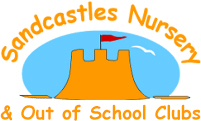Temperature Policy
At Sandcastles, children’s temperatures are not routinely checked. Our practitioners form strong relationships with the children in their care and get to know what is ‘normal behaviour’ for each child. If a child displays out of character behaviour, such as not eating, lethargy, unusual crying, clinginess, feel warm and look flushed or develop a rash, further investigation will be carried out. These symptoms, among others, often lead to the temperature being checked.
An average normal temperate is 36.4 and can range up to 37.4.
37.5 and above is deemed a high temperature and the child will be monitored closely. Our practitioner’s knowledge of the child will determine how they respond to each individual’s needs taking into consideration the environmental factors including the time of year, weather/temperature/if the heating is on, what clothing the children are wearing, if they have just woken from a sleep and a blanket had been used, etc. They will also check for the presence of other symptoms, sweaty/clammy skin, rash, refusal to eat or drink, or dehydration (dry nappies, no tears when crying).
- For temperatures over 37.5 degrees, the child can remain at Sandcastles, if they seem well enough to do so. Fluids will be offered, clothing may be loosened, parents will be contacted and if approved, Calpol will be administered in-line with our medication procedures. The temperature will be closely monitored. If Calpol does not reduce the temperature, then parents will need to collect.
- For temperatures above 38 degrees in babies under 3 months and above 39 degrees in babies between 3 and 6 months, parents will be contacted, Calpol will be administered in line with our medication procedures, and prompt collection will be expected. In addition, immediate medical attention must be sought.
Calpol will not be administered to babies under 3 months.
When we will seek emergency medical advice and call 999:
If a child has a high temperature and any of the following:
- has a stiff neck
- has a rash that does not fade when you press a glass against it
- is bothered by light
- has a fit (febrile seizure) for the first time (they cannot stop shaking)
- has unusually cold hands and feet
- has pale, blotchy, blue or grey skin
- has a weak, high-pitched cry that’s not like their normal cry
- is drowsy and hard to wake
- is extremely agitated (does not stop crying) or is confused
- finds it hard to breathe and sucks their stomach in under their ribs
- has a soft spot on their head that curves outwards (bulging fontanelle)
- is not responding like they normally do, or is not interested in feeding or normal activities
